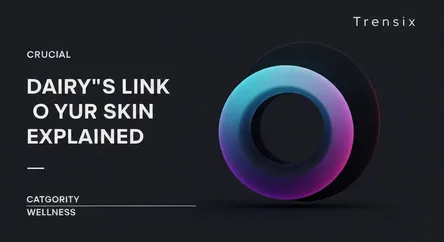Wellness
Dairy's Link to Your Skin Explained

Exploring the connection between dairy consumption and common skin issues like acne, and why many are ditching dairy for clearer skin.
What is it?
The link between dairy and skin issues refers to the potential for dairy products to trigger or worsen conditions like acne, rosacea, and eczema in some individuals. This connection is often attributed to components in cow's milk. Hormones like insulin-like growth factor 1 (IGF-1) and other natural growth hormones can stimulate oil glands, leading to increased sebum production and clogged pores. Additionally, milk proteins such as casein and whey can promote inflammation. For those with lactose intolerance, the body's inflammatory response to the milk sugar can also manifest as skin problems.
Why is it trending?
The topic is gaining traction as more people explore dietary impacts on overall wellness. Growing scientific research and countless personal anecdotes shared online have strengthened the correlation between dairy intake and skin flare-ups. As wellness culture emphasizes understanding food sensitivities, many are experimenting with elimination diets to pinpoint triggers for their skin conditions. The rising popularity of plant-based diets and the wide availability of dairy-free alternatives have also made it easier for people to explore a dairy-free lifestyle for potential skin benefits.
How does it affect people?
This connection leads many individuals struggling with persistent skin problems to eliminate dairy from their diets as a trial-and-error approach to see if their skin improves. This dietary shift encourages the use of alternatives like almond, soy, or oat milk. It empowers people to take a more holistic view of their skincare, recognizing that what they consume can be as important as the products they apply. For some, reducing or cutting out dairy can lead to a noticeable improvement in their complexion and a better understanding of their body's unique sensitivities.